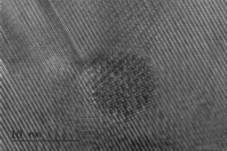Topologically designed magnesium alloys for biomedical
applications
A three-year project, financed by Slovenian Research Agency (lead agency scheme J2-7157) and Austrian FWF, enabled to join the forces of University of Nova Gorica - UNG (SI), University of Vienna -UVP (AT) and Institute for Metals and Technologies - IMT(SI) on R&D work on magnesium for future medical applications.
principal investigator: prof. dr. Dmytro Orlov
Description of the project: The main objective of this proposal is to develop high performance magnesium (Mg) alloys readily
adoptable in biomedicine as well as in lightweight
mobility sectors.
-
Mg is selected because of
exceptional yet unexploited potential for various applications due to unique combination of
properties including high strength to density
ratio, excellent environmental sustainability, and superb
biocompatibility.
-
The alloys consist from abundant affordable components readily available
from within the EU, which should facilitate the improvement of security, sustainability and
socioeconomic prosperity of people in Slovenia, Europe and beyond.
-
These objectives will be achieved through multilevel
control of structural characteristics in
Mg alloys based on topological principles. A multilevel
control of material structure will become possible through unique inhouse
techniques for magnesium alloy fabrication and processing as well as advanced characterisation
facilities.
-
The latter will include large infrastructure
facilities (e.g. synchrotrons ELETTRA, DESY
and MAX IV Lab), in house
instruments for high resolution
transmission and scanning electron microscopy, including electron backscatter
diffraction (EBSD) analysis, various mechanical testing,
including fatigue and nanoindentation,
and extensive collaborative network for biodegradation
testing. The extensive experimental investigations will be guided by ‘abinitio’
as well as multiscale
solidification and phase transformation computer simulations.
- The results of this project will have a major impact spanning from enhanced basic
understanding of novel magnesium alloy design and degradation in various environments to the
development of advanced low footprint
technologies of their manufacturing to opening new
horizons in sustainable life management.
Duration and financing: The project runs from 1.1. 2016 to 31.12.2018 and is financed by ARRS with 100.000EUR per year for the Slovenian partners (80% UNG and 20% IMT)
Slovenian members of the project group:
from UNG: from: IMT
prof. dr.Dmytro Orlov prof. Božidar Šarler
prof. dr.Sandra Gardonio dr. Robert Vertnik
assist prof. Mattia Fanetti dr. Grega Belšak
prof. dr. Matjaž Valant Boštjan Mavrič
Vanja Hatić
Realization of the project according to the WPs:
The kick-off meeting of the project (task WP-V.1) was held at UNG campus in Ajdovscina in late April 2016 thus accomplishing the milestone A. During this meeting, first three Mg alloys to be produced within WP-I of the project were selected and experimental procedures for the beginning of the project were elaborated based on the capacities of all the project teams. The alloys selected for the first batch of fabrication are the ternary system of prime interest Mg-5Zn-0.3Ca, and two model binary alloys Mg-5Zn and Mg-0.3Ca, all in weight percent, which fulfilled task WP-I.1 of the project plan. Such a combination of materials should allow developing the best knowledge about the control of microstructure-property relationship in the systems of interest in present project.
Other work on the project was carried out by all the teams in parallel according to their tasks. The UVP team focused on microstructure and property characterization of as-received materials as well as their thermo-mechanical processing (tasks WP-I.3, WP-II.1, WP-II.2, WP-III.1 and WP-III.3). The UNG team worked on the characterization of intermetallic precipitates in the materials as well as investigation of reactions on magnesium (Mg) surface upon exposure to oxygen and water (tasks WP-I.3, WP-II.1, WP-II.2, WP-III.1, WP-III.2 and WP-IV.2). IMT team supported experimental efforts of the UNG by electron back-scatter diffraction (EBSD) analysis while mostly concentrating on the development of computer models revealing phenomena during Mg alloy crystallization (tasks WP-III.1 and WP-IV.3).
Project Outputs:
1. Vinogradov, A., Vasilev, E., Seleznev, M., Máthis, K., Orlov, D., & Merson, D. “On the limits of acoustic emission detectability for twinning” // Materials Letters, V.183 (2016) pp.417-419.
This article investigates the limit of detectability of twinning deformation mechanism in Mg by non-invasive “acoustic emission” technique during plastic deformation under mechanical loading. Minimum twin size and its nucleation time detectable by acoustic emission are identified.
2. D. Orlov & V. V. Joshi “Advances and achievements in in-situ analysis of corrosion and structure-property relationship in Mg alloys” // JOM, V.68, Issue 12 (2016) pp. 3040-3041.
This is an introductory editorial note to the special issue of JOM on “Advances and achievements in in-situ analysis of corrosion and structure-property relationship in Mg alloys” edited by the project leader Prof. Orlov.
3. M. Vargas, S. Lathabai, P.J. Uggowitzer, Y. Qi, D. Orlov and Y. Estrin “Microstructure, crystallographic texture and mechanical behaviour of friction stir processed Mg-Zn-Ca-Zr alloy ZKX50” // Materials Science and Engineering A, V.685C (2017) pp.253–264.
This article investigates the evolution of various structure characteristics and properties in a Mg-Zn-Ca-Zr alloy of direct relevance to this project during friction stir processing, which is a special deformation processing technique for microstructure control in thin sheet workpieces of the surface of bulk products. The roles of intermetallic precipitates, texture and grain size in the control of mechanical properties in this novel alloy were identified.













